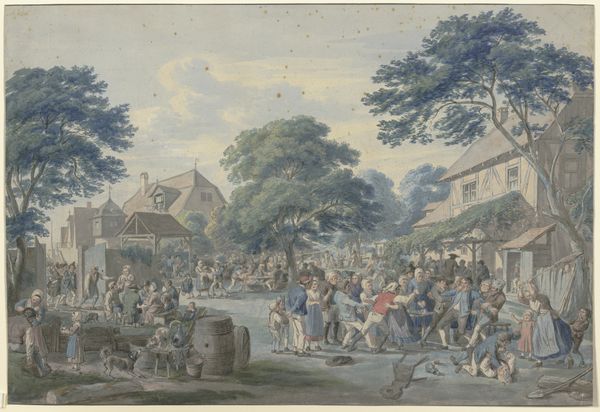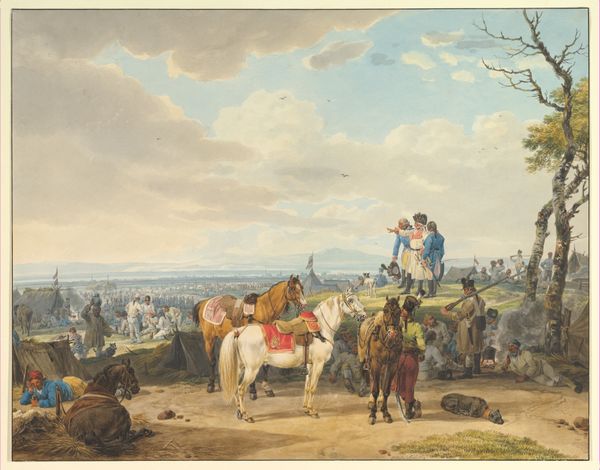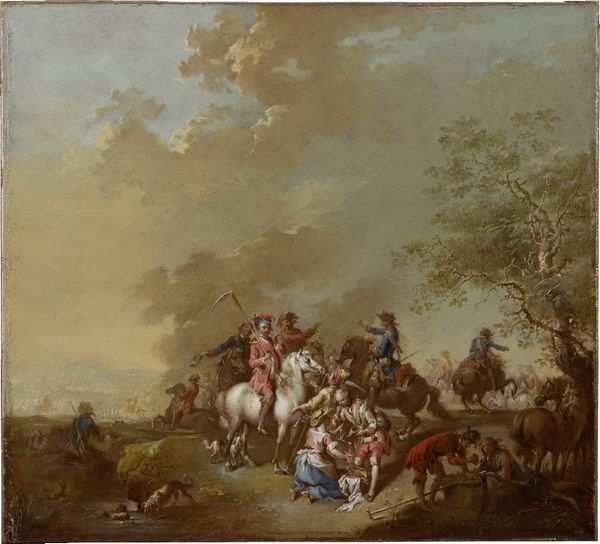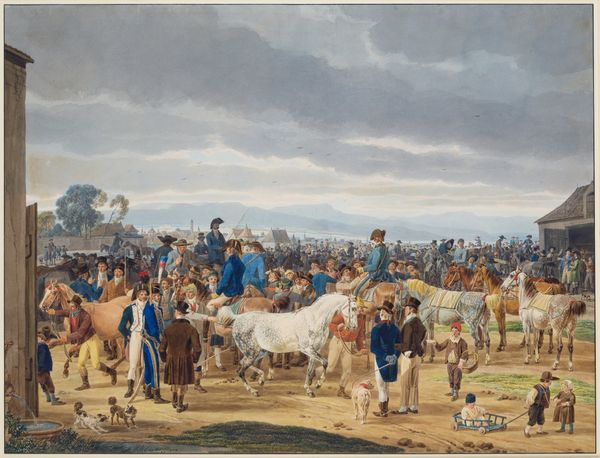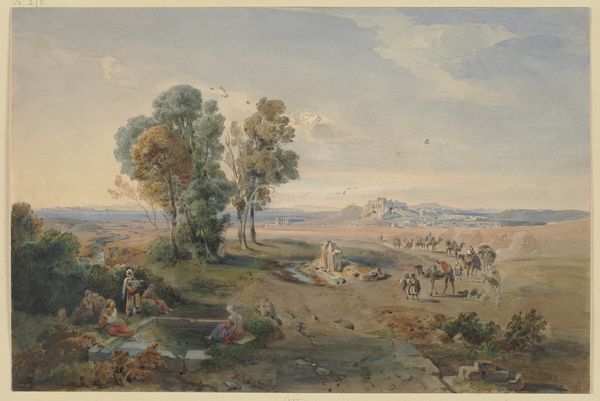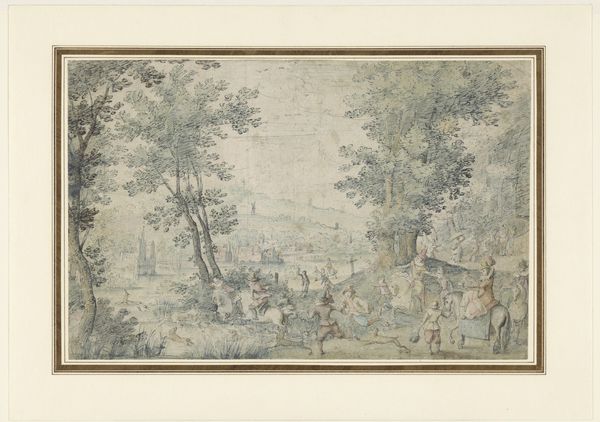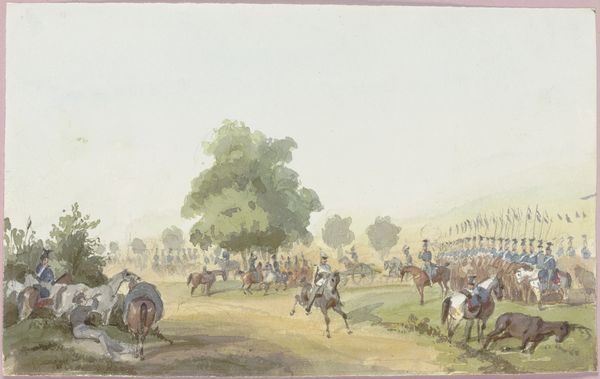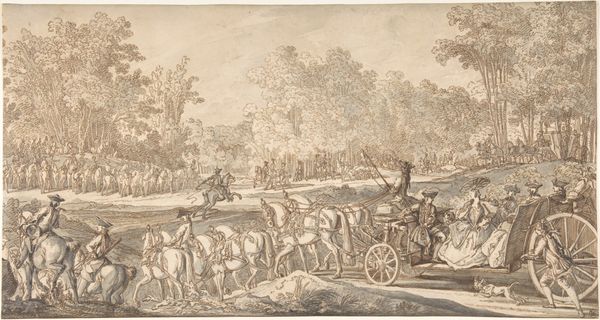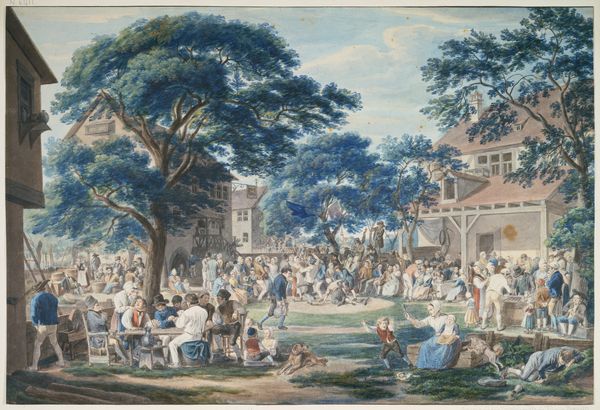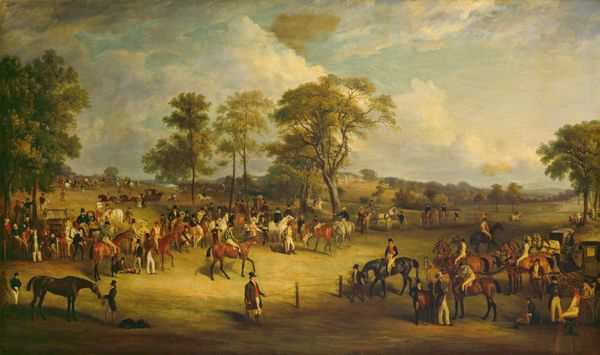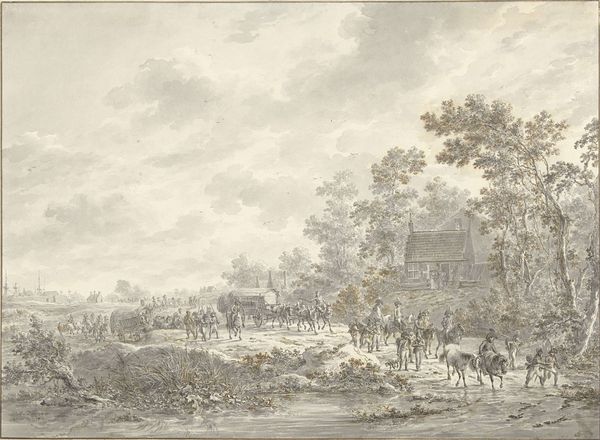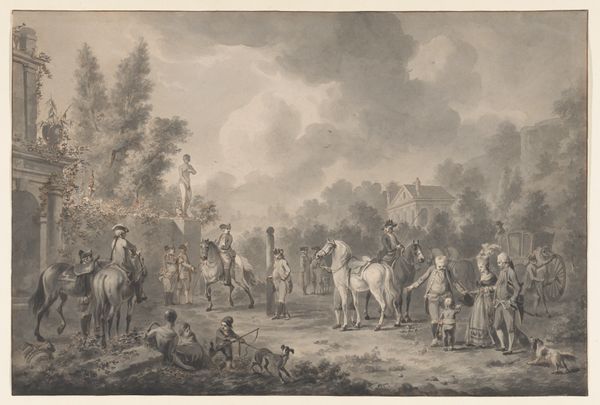
Dimensions: 15 9/16 x 27 7/8 in. (39.5 x 70.8 cm)
Copyright: Public Domain
Editor: So, here we have Eugène-Louis Lami’s "Camp de Compiègne, 1698," created sometime between 1855 and 1865, a watercolor and gouache drawing. It gives me such a feeling of bustle, like a fleeting moment captured just as a grand procession is unfolding. The horses, the crowd, all the fancy dresses... it's almost dizzying. What strikes you most about this scene? Curator: Ah, dizziness! A splendid observation. I see it as a conjuring trick, an illusion if you will. Lami’s not simply recording history. Instead, he’s inviting us into a dream. Observe how he suspends us between meticulous detail – each shimmering costume, each restless horse – and washes of ethereal watercolor. History melts into theatre, doesn't it? Almost as if it is a performance on life's great stage! Editor: Theatre…I like that! So it's not really about historical accuracy? More about capturing a feeling, an impression? Curator: Precisely! He borrows from history but doesn't pledge allegiance to it. Ask yourself, what is it about this particular era that fascinated Lami and his audience? Was it the echoes of chivalry, a yearning for a bygone elegance amidst the rise of industry? It's a yearning to revisit these scenes, just like dipping our toes in water. A memory to hold onto. Editor: That makes sense. The light seems to add to that dreamlike quality as well, almost blurring the lines between the figures and the landscape. I hadn't thought about the yearning for the past in the Industrial Age before. Curator: Indeed! He uses the past to comment on the present, just like us peering through a looking glass! Editor: I hadn't really thought about it that way, it really adds depth to my understanding! Thank you. Curator: It has been a great joy sharing perspectives. These historical artworks are timeless, as they can be reinterpreted again and again.
Comments
No comments
Be the first to comment and join the conversation on the ultimate creative platform.

